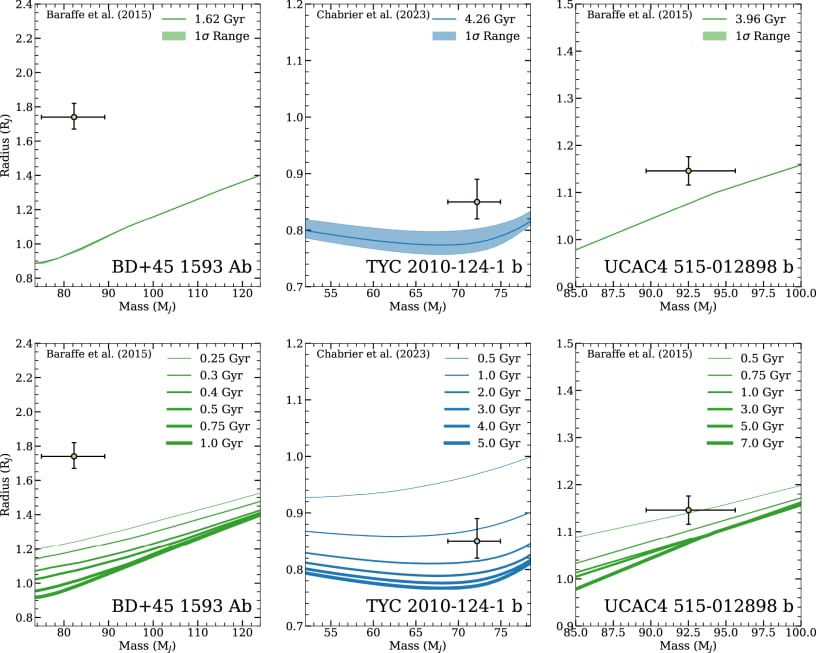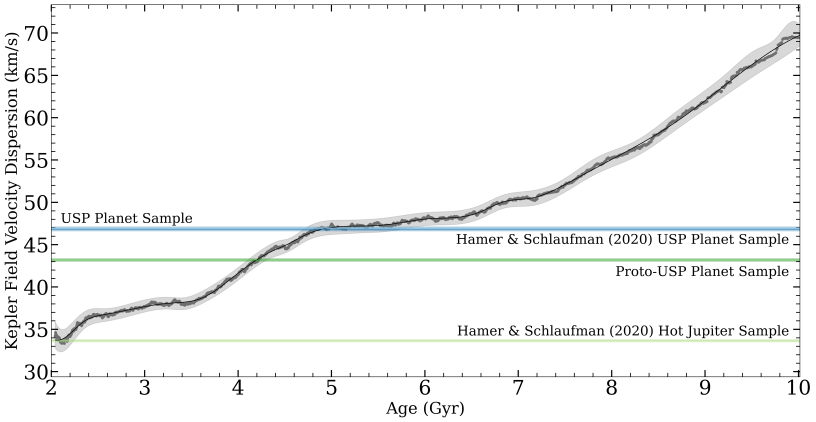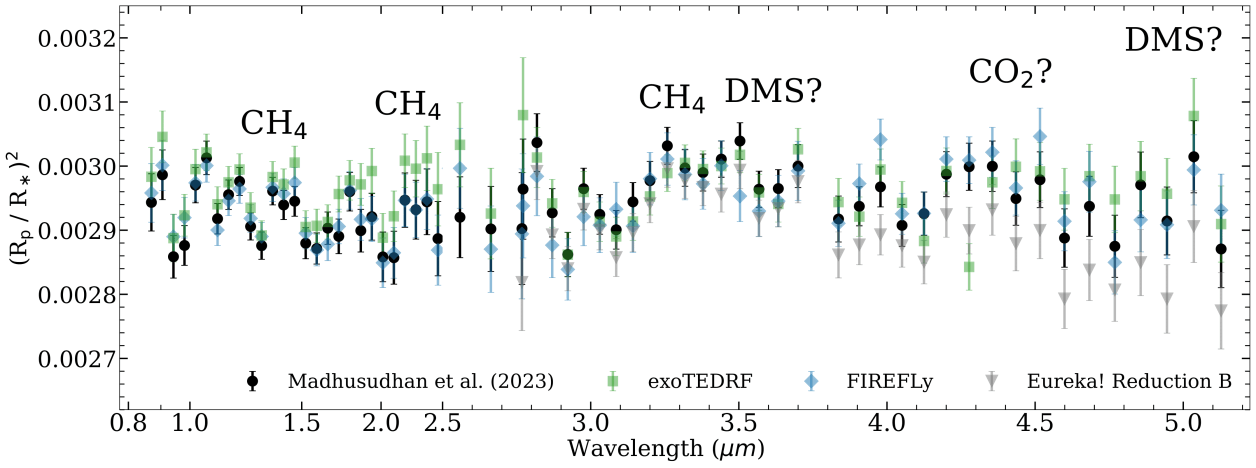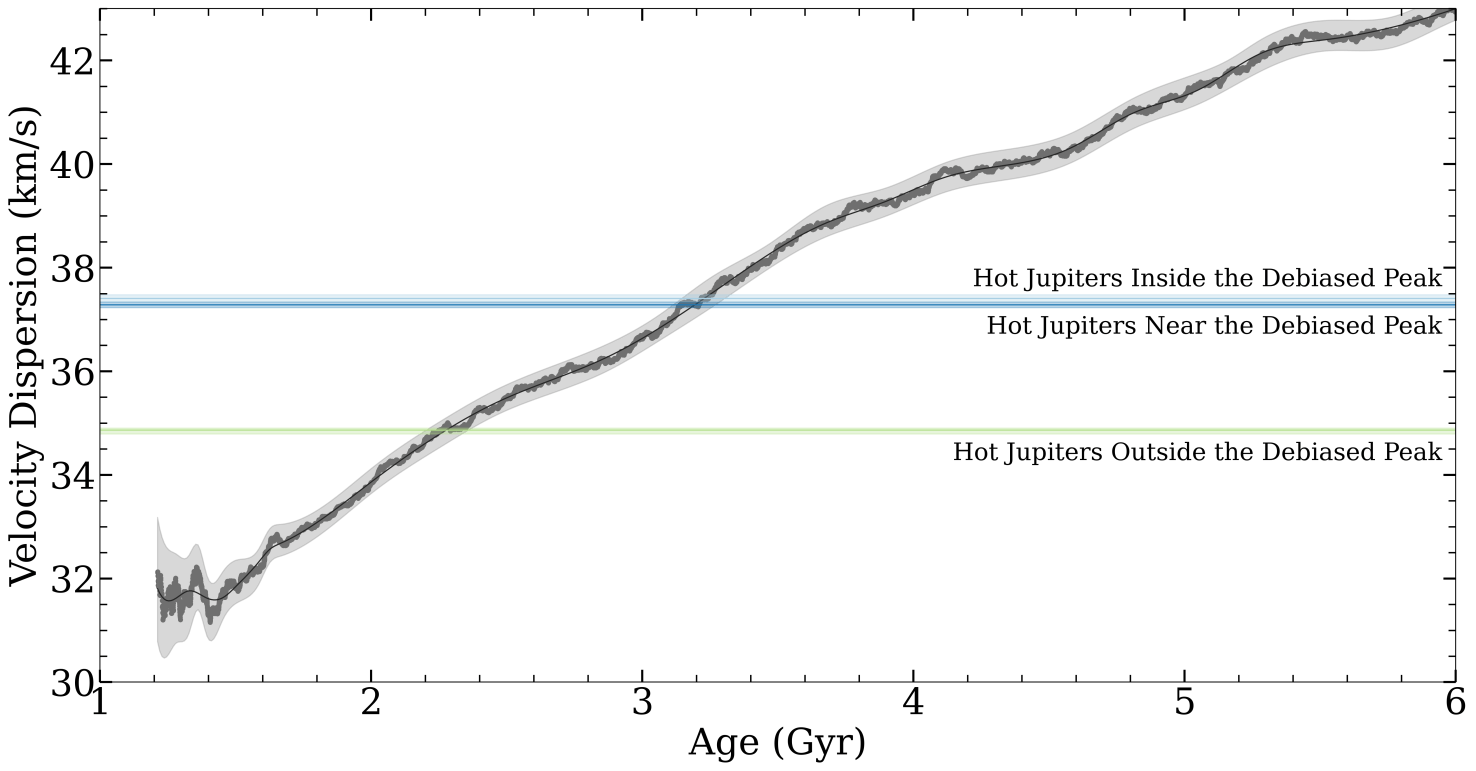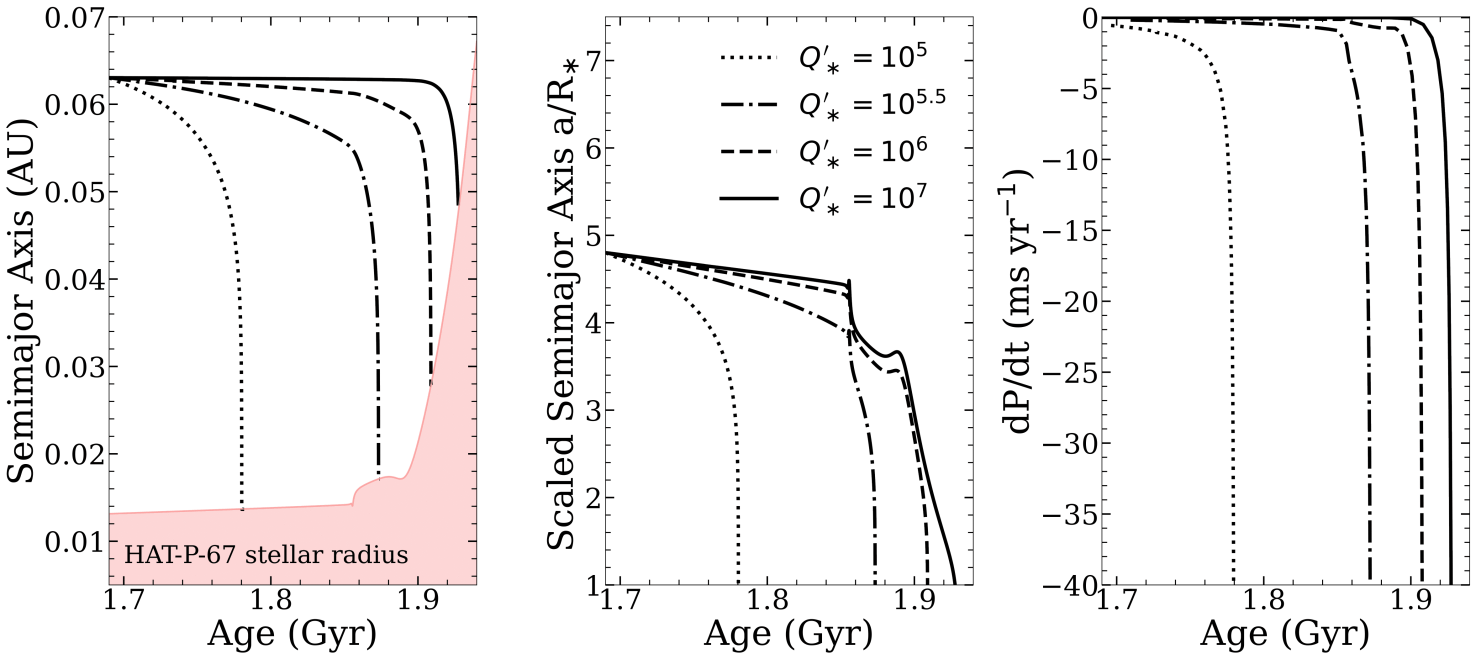Gaia + TESS = Transiting Brown Dwarfs & Very Low-mass Stars
Gaia's third data release presented tens of thousands of single-lined spectroscopic binary systems' orbital parameters, but it is only sensitive to things much more massive than exoplanets. This includes brown dwarfs, which aren't massive enough for their cores to fuse hydrogen, and low-mass stars that are (but are still quite faint). We can use these orbit fits to infer the minimum mass of the much fainter secondary. This is nice, but not as informative as having an upper limit as well, which we need an inclination to get. Combining Gaia's catalog with transits (which get you the inclination) from the Transiting Exoplanet Survey Satellite (TESS) mission results in masses and radii for hundreds of transiting low-mass stars or brown dwarfs!
I presented a poster on this at Exoplanets V in June 2024, so you might have seen it there!
You can read more about this paper here! (Verification of Gaia Data Release 3 Single-lined Spectroscopic Binary Solutions With Three Transiting Low-mass Secondaries)
